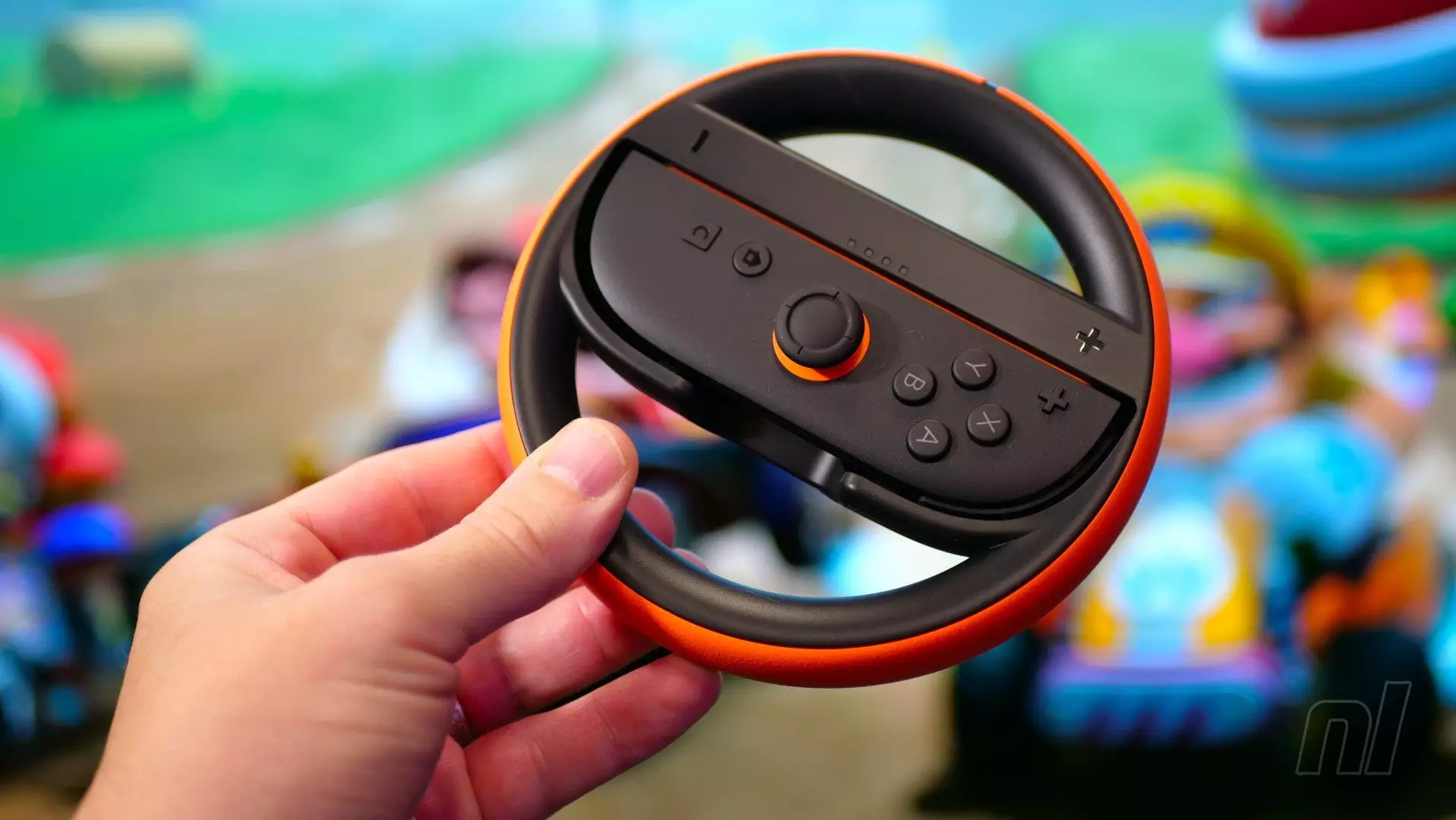Since Nintendo revolutionized the gaming world with motion controls on the Wii, players have experienced a rollercoaster of expectations and frustrations. The initial enthusiasm for motion-based gameplay was met with mixed reactions as peripherals like the Wii Wheel became ubiquitous. While Nintendo promoted these accessories as immersive enhancements, seasoned gamers quickly realized they often compromised precision and playability. The legacy of these add-ons is complex; they symbolize Nintendo’s willingness to innovate, but also exemplify how hardware designed for casual fun can sometimes undermine competitive fairness and control accuracy.
When the Nintendo Switch arrived, the anticipation was high that the company would refine its approach to motion steering. Yet, the prevailing sentiment remained: plastic, bolt-on attachments—though charming—rarely deliver on the promise of a flawless racing experience. The Switch Joy-Con wheel, launched alongside the console and *Mario Kart 8 Deluxe*, was no exception. It looked playful but was widely criticized for its unrefined control and unwieldy design. Despite this, Nintendo persisted, releasing updated wheels for Switch 2, which begs the question: do these newer peripherals genuinely elevate the gaming experience, or are they just more of the same superficial fixations?
Aesthetic and Functional Innovations—Sort Of
The latest iteration of Nintendo’s racing wheels incorporates noticeable design improvements, particularly to accommodate the larger, bulkier Joy-Con 2 controllers. Aesthetically, the new wheels are neat and streamlined, eschewing visible screws and clutter for a cleaner profile. The rings around each wheel are coated with a textured, grip-enhancing material—an appreciated touch that mitigates slipping during intense gameplay. Magnetic attachment points ensure that the Joy-Con 2 snaps securely into place, and the ease of pairing—triggered by magnetic contact—is a thoughtful feature that simplifies setup, especially useful for casual users who may not be tech-savvy.
However, beneath the surface, the fundamental challenge remains. The core concept of mimicking a real steering wheel through a floating, plastic device doesn’t quite translate into precise control. The magnetic “click-in” feature, while convenient, emphasizes the device’s role as a novelty rather than a high-fidelity controller. The physical movement is limited and imprecise, making detailed cornering or tight turns frustratingly inconsistent. This flaw isn’t surprising; after all, no plastic wheel can match the nuanced control afforded by traditional analog sticks or dedicated racing controllers.
The Reality of Control and Audience
The primary appeal of these wheels does not stem from delivering pro-level accuracy but from elevating the social, chaotic nature of multiplayer gaming. They cater to a niche of casual players—families, kids, or groups seeking lighthearted fun rather than competitive dominance. When everyone shelves their traditional controllers for a set of these wheels, the gameplay shifts from precision racing to a hilarious and often unpredictable romp.
This democratization of control mechanics fosters a more inclusive gaming environment. Instead of one player dominating because of superior reflexes or controller familiarity, the racing becomes a shared event—loud, silly, and memorable. In that context, the imperfections of the wheels are, paradoxically, part of their charm. They turn what could be a sterile, competitive session into a lively party game, filled with accidental spins, overcompensated turns, and bursts of laughter.
However, this enjoyment comes with caveats. Casual players recognize that the unpredictability can lead to frustration, especially if they are aiming for accidental mastery or trying to teach younger children. Those seeking competitive edge or perfection won’t find solace in this setup; the limitations are intrinsic, and the physical design simply cannot substitute for true racing hardware.
The Economics of Fun
Perhaps the most compelling aspect of Nintendo’s latest wheels is their affordability. At around £16.99 / $25, they present a low-cost entry point into a communal, chaotic multiplayer experience. This price point ensures that the investment is minimal enough to encourage experimentation without significant financial risk. For families or social gatherings, this affordability enables a great deal of spontaneous fun—additional players can join in without the need for expensive, purpose-built equipment.
Yet, this cheapness also underscores their role as accessories for party games rather than serious simulation tools. Nintendo’s strategy seems rooted in lowering barriers to fun rather than elevating control fidelity. The wheels’ approximate control is a feature rather than a flaw—if you accept their limitations, they can be the catalyst for countless entertaining moments. But those expecting a realistic or precise racing experience should temper their expectations accordingly.
Final Thoughts: A Playful, Imperfect Companion
The new Nintendo wheels serve as a reminder of the company’s relentless pursuit of accessible, inclusive fun. While they may not revolutionize the racing genre—or even bring the kind of refined control experienced with dedicated racing hardware—they succeed in their core mission: to make multiplayer Mario Kart sessions more engaging, unpredictable, and enjoyable. Still, it’s essential to recognize their shortcomings candidly.
They are an ideal choice for casual players and social settings but are fundamentally unsuited for serious competitive racing. Their value isn’t rooted in technical excellence but in their capacity to foster lighthearted chaos. For those who can embrace their imperfections and look for comic relief rather than precision, Nintendo’s latest wheels are a worthy, inexpensive addition to your gaming collection. Just don’t expect them to turn you into a racing pro—sometimes, the journey’s about fun, not finesse.

